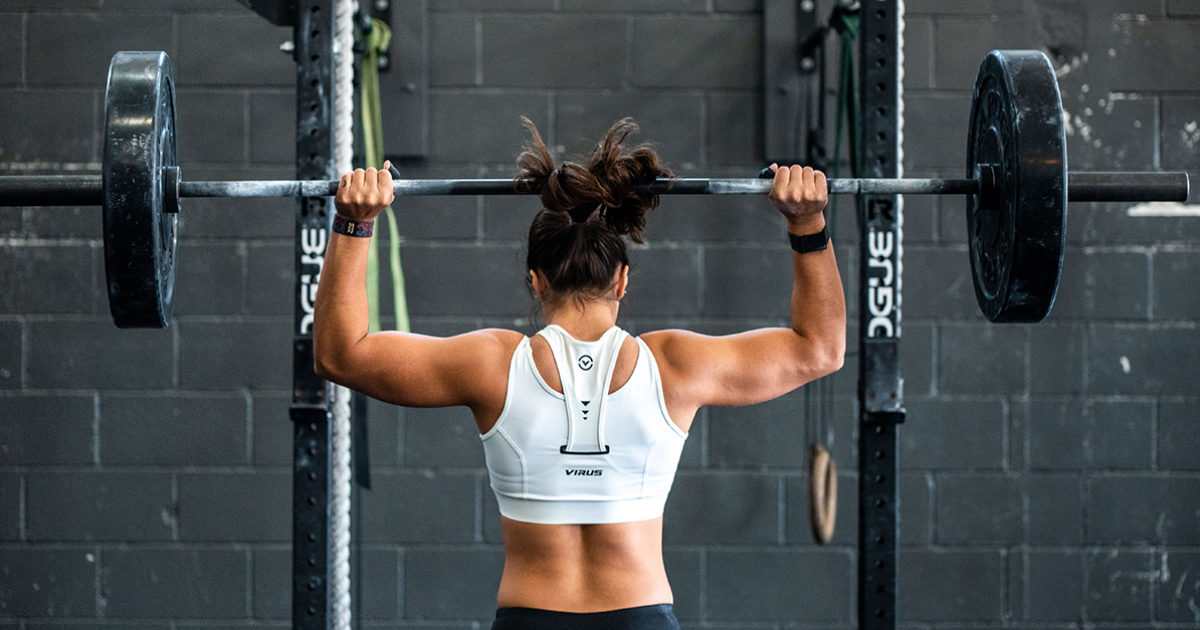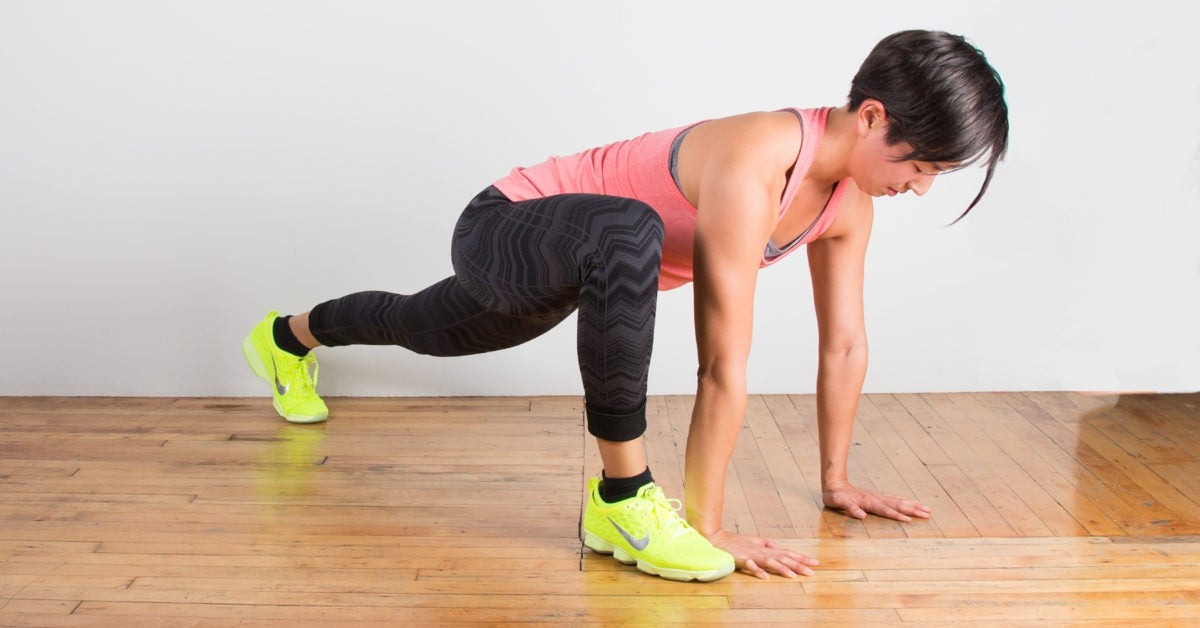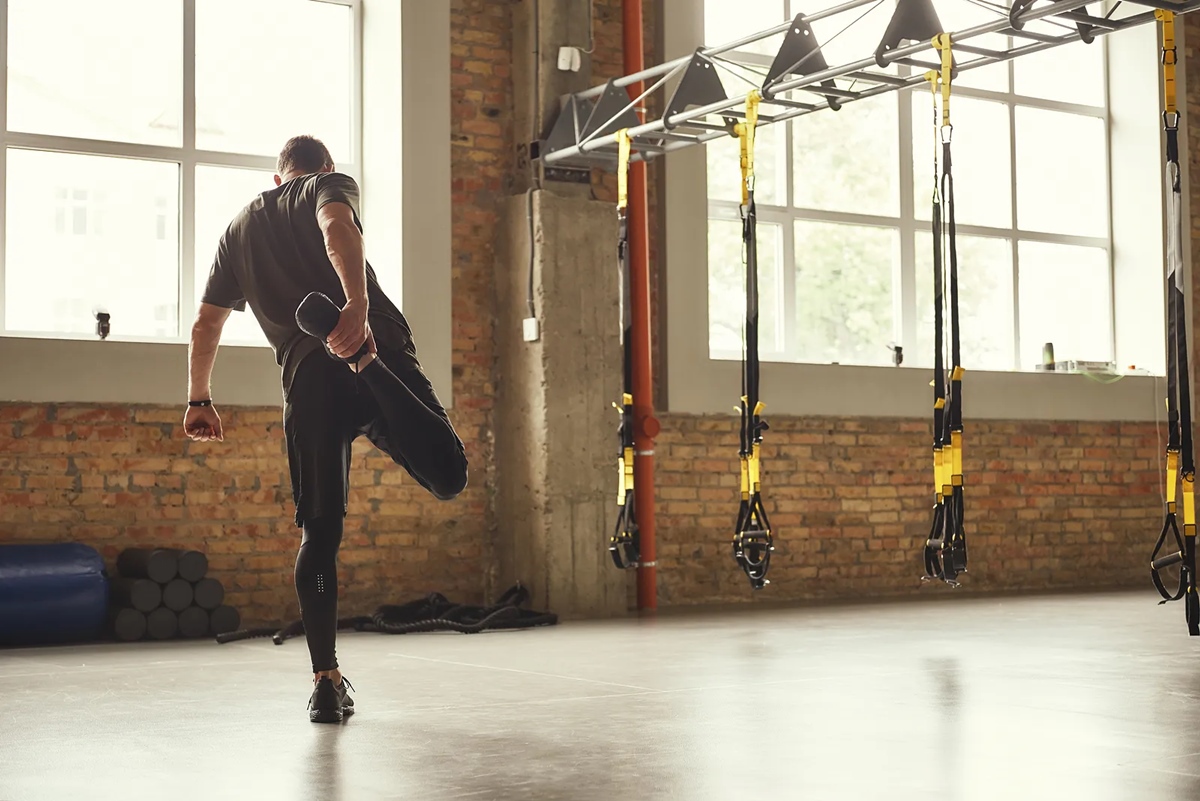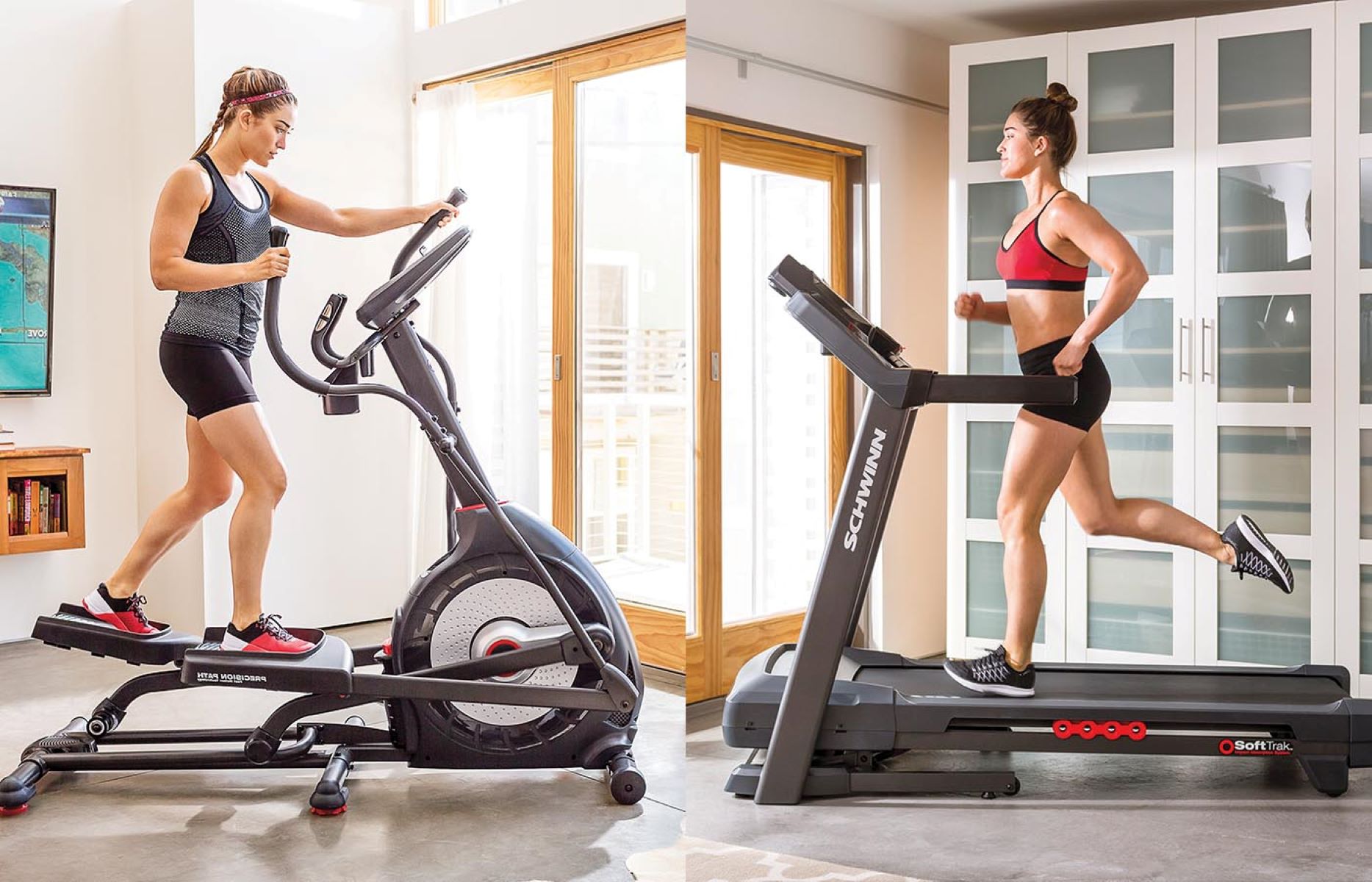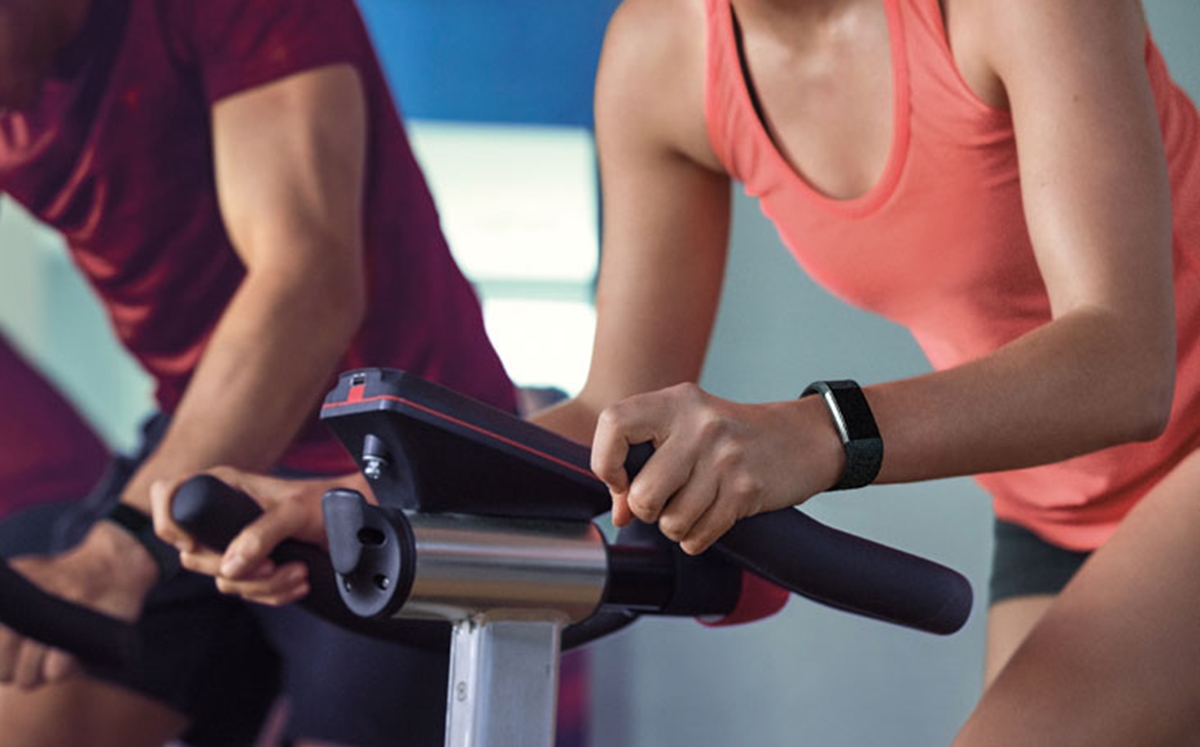Home>Misc>Featured>How To Make Your Fitness Tracker Work When On An Elliptical Machine
Featured
How To Make Your Fitness Tracker Work When On An Elliptical Machine
Modified: January 2, 2024
Discover how to make your fitness tracker work effortlessly while using an elliptical machine. Learn how to track your progress and stay motivated with our featured tips and tricks.
Introduction
Fitness trackers have become an essential tool for individuals seeking to improve their health and track their progress towards fitness goals. These devices offer a wealth of information, from step counts to heart rate monitoring, and have transformed the way we approach our fitness routines. However, when it comes to using fitness trackers on an elliptical machine, there can be some challenges and discrepancies in tracking accuracy.
Elliptical machines are popular in gyms and home workout spaces due to their low-impact nature and ability to provide a full-body workout. However, their unique motion can pose a challenge when it comes to tracking data accurately on a fitness tracker. The back-and-forth and gliding motion on an elliptical can differ from traditional walking or running, causing discrepancies in step counts and calorie burning estimations.
In this article, we will explore the challenges of using fitness trackers on elliptical machines and provide tips on how to make your fitness tracker work effectively in this setting. We will also discuss the benefits of using fitness trackers on elliptical machines and alternative ways to track your elliptical workouts if your tracker is not providing accurate data.
So, if you’ve been struggling with tracking your elliptical workouts on your fitness tracker, this article is here to help. Let’s dive in and discover how you can maximize the effectiveness of your fitness tracker when using it on an elliptical machine.
Understanding Fitness Trackers
Fitness trackers are wearable devices that are designed to monitor and track various aspects of your physical activity and health. They have gained immense popularity in recent years due to their ability to provide real-time feedback and data on your workouts, steps taken, distance covered, heart rate, and even sleep patterns. Understanding how these devices work can help you make the most out of your fitness tracker when using it on an elliptical machine.
Fitness trackers typically consist of several sensors, including accelerometers, gyroscopes, and heart rate monitors, which work together to capture and analyze your movements. The accelerometer is responsible for tracking your steps and calculating distance traveled, while the gyroscope measures the orientation and rotation of the device.
When you use a fitness tracker on an elliptical machine, the device relies heavily on the accelerometer to track your steps. However, the elliptical motion can make it challenging for the accelerometer to accurately determine your steps, as the movement is different from the standard walking or running motion. This can result in inaccuracies in step counts and overall activity measurements.
In addition to step tracking, fitness trackers also use heart rate monitors to provide valuable information about your workout intensity and calorie burning. By monitoring your heart rate, fitness trackers can estimate the number of calories burned during your elliptical workout. However, due to the unique motion of an elliptical machine, the heart rate monitor may not capture your true exertion accurately, leading to discrepancies in calorie calculations.
Understanding the limitations and capabilities of your fitness tracker is crucial for effectively tracking your elliptical workouts. While they are highly advanced devices, it’s important to keep in mind that they are not perfect and may have some limitations when it comes to accurately tracking your movements on an elliptical machine.
Now that we have a better understanding of fitness trackers and their functionalities, let’s address the challenges that arise when using them on an elliptical machine and explore potential solutions to make them work more effectively.
Challenges of Using Fitness Trackers on Elliptical Machines
While fitness trackers are designed to track various physical activities, using them on an elliptical machine can present some unique challenges. The motion of an elliptical machine differs from traditional walking or running, which can lead to inaccuracies in tracking data. Here are some key challenges you may encounter when using fitness trackers on elliptical machines:
- Step Count Discrepancies: The back-and-forth and gliding motion on an elliptical machine can make it difficult for fitness trackers to accurately count steps. Since the step tracking functionality relies on the accelerometer, the unique motion of an elliptical machine can confuse the device, resulting in inaccurate step counts.
- Calorie Calculation Inaccuracies: Fitness trackers estimate calorie burn based on factors like step count, heart rate, and duration of exercise. However, the elliptical motion may not be well-captured by the tracker’s sensors, leading to discrepancies in calorie calculation. The intensity and resistance settings on the elliptical machine can also impact the accuracy of calorie burn estimations.
- Heart Rate Monitoring Challenges: Heart rate monitoring is an important feature of fitness trackers, providing insights into your workout intensity and overall fitness. On an elliptical machine, the unique motion may pose challenges for the heart rate monitor to capture an accurate reading. This can result in inaccurate data, affecting the accuracy of calorie calculations and workout intensity analysis.
- Workout Analysis Limitations: Fitness trackers often provide detailed workout analysis, including metrics like average speed, distance covered, and elevation gained. However, on an elliptical machine, these metrics may not be as accurate due to the differences in motion and the tracker’s reliance on step counts and heart rate data.
These challenges can be frustrating for individuals who rely on their fitness trackers to track their performance and progress. However, there are several tips and techniques that can help overcome these challenges and make your fitness tracker work more effectively on an elliptical machine, which we will explore in the next section.
Tips for Making Your Fitness Tracker Work on an Elliptical Machine
While using a fitness tracker on an elliptical machine may present some challenges, there are several tips and techniques that can help improve the accuracy of your tracking. By following these tips, you can make your fitness tracker work more effectively on an elliptical machine:
- Wear Your Tracker Correctly: Make sure to wear your fitness tracker on your non-dominant wrist or according to the manufacturer’s instructions for optimal accuracy. This ensures that the sensors are positioned correctly to capture your movements during your elliptical workout.
- Use Additional Metrics: If your fitness tracker allows it, utilize additional metrics like workout duration and perceived exertion to get a better understanding of your elliptical workout. While step counts and heart rate may not be as accurate, these additional metrics can provide valuable insights into your overall effort and progress.
- Calibrate Your Tracker: Some fitness trackers offer calibration features where you can manually input your elliptical workouts to improve accuracy. Look for this option in your tracker’s settings and follow the instructions to calibrate it specifically for elliptical workouts.
- Adjust the Stride Length: If your fitness tracker allows you to manually input your stride length, try adjusting it to match your elliptical motion. This may help improve the accuracy of your step counts and distance measurements.
- Pair with a Chest Strap Heart Rate Monitor: Consider using a chest strap heart rate monitor in addition to your fitness tracker’s built-in heart rate monitor. Chest strap monitors are usually more accurate and can provide a more precise heart rate reading during your elliptical workout.
- Track Your Elliptical Workouts Manually: If you find that your fitness tracker is consistently inaccurate, consider manually tracking your elliptical workouts. Use a timer or a dedicated workout tracking app to track your time, distance, and perceived exertion during your elliptical sessions.
By implementing these tips, you can increase the accuracy of your fitness tracker’s data and have a better understanding of your elliptical workouts. However, if using your fitness tracker on an elliptical machine continues to be problematic, there are alternative ways to track your workouts, which we will explore in the next section.
Calibrating Your Fitness Tracker for Elliptical Workouts
Calibrating your fitness tracker specifically for elliptical workouts can help improve its accuracy in tracking your activity and performance. While not all fitness trackers offer this feature, those that do allow you to manually input and adjust settings for elliptical workouts. Here are some steps to follow to calibrate your fitness tracker for elliptical workouts:
- Read the Manual: Start by referring to the user manual or the manufacturer’s instructions for your fitness tracker. Look for any specific guidance or instructions on calibrating the tracker for elliptical workouts.
- Select the Elliptical Workout Option: If your fitness tracker has different workout options, make sure to select the “Elliptical” or similar option before starting your workout. This will ensure that the tracker is using the appropriate algorithms and settings for elliptical motion.
- Adjust Stride Length: Some trackers allow you to manually input your stride length. Measure the length of your elliptical stride (the distance between each step) and input it into your tracker if this feature is available. This can help improve the accuracy of step counts and distance calculations.
- Input Resistance Level: If your elliptical machine has adjustable resistance levels, try to estimate or find out the resistance setting you typically use during your workouts. Some fitness trackers allow you to input this information to better estimate your calorie burn and overall effort.
- Monitor Performance: Pay close attention to your fitness tracker’s data during and after your elliptical workouts. Take note of any discrepancies or inconsistencies and adjust the settings or calibrate again if necessary. Keep experimenting and fine-tuning until you are satisfied with the accuracy of your tracker’s performance.
It’s important to note that not all fitness trackers have the capability to calibrate specifically for elliptical workouts. If your tracker does not have this feature, you can still make use of the tips mentioned earlier to improve the accuracy of the data.
Now that we have explored ways to calibrate your fitness tracker for elliptical workouts, let’s discuss alternative ways to track your elliptical sessions if your fitness tracker is not providing the accuracy you desire.
Alternative Ways to Track Your Elliptical Workouts
If your fitness tracker is not providing accurate data or if you prefer to use alternative methods to track your elliptical workouts, there are several options available. While these methods may not be as convenient as using a fitness tracker, they can still provide valuable insights into your performance and progress. Here are some alternative ways to track your elliptical workouts:
- Manual Tracking: Use a timer or a stopwatch to track the duration of your elliptical workouts. Pay attention to your perceived exertion and adjust the resistance settings accordingly to challenge yourself. While this method does not provide detailed metrics like steps or heart rate, it gives you a baseline to compare your future workouts.
- Fitness Apps: Utilize dedicated fitness tracking apps that are specifically designed for elliptical workouts. These apps use GPS and motion sensors to track your movement and provide data such as distance, speed, and calorie burn estimations. Some popular options include Runkeeper, Strava, and MapMyFitness.
- Heart Rate Monitors: Use a chest strap heart rate monitor in conjunction with your elliptical workouts. These monitors are more accurate than wrist-based heart rate sensors and can provide reliable heart rate data, which can then be used to estimate calorie burn and measure workout intensity.
- Elliptical Machine Metrics: Many elliptical machines come with built-in monitors that track various metrics like time, distance, and resistance level. While these may not be as accurate as fitness trackers, they can still give you an idea of your workout intensity and provide a consistent baseline for comparison.
- Maintain a Workout Journal: Keep a record of your elliptical workouts in a journal, noting the date, time, duration, perceived exertion, and any other relevant information. This can help you track your progress over time, even without the specific metrics provided by a fitness tracker.
Experiment with these alternative methods and see which one works best for you. It’s important to remember that while fitness trackers can be helpful, they are not the only tool available for tracking your elliptical workouts. The ultimate goal is to stay active and maintain a consistent exercise routine, regardless of the tracking method you choose.
Now that we have explored alternative ways to track your elliptical workouts, let’s discuss the benefits of using fitness trackers on elliptical machines.
Benefits of Using Fitness Trackers on Elliptical Machines
While using fitness trackers on elliptical machines may come with challenges, there are several benefits to incorporating these devices into your workouts. Fitness trackers can provide valuable insights and motivation, helping you make the most out of your elliptical sessions. Here are some key benefits of using fitness trackers on elliptical machines:
- Activity Tracking: Fitness trackers can accurately track and record your activity levels during elliptical workouts. They provide metrics such as steps taken, distance covered, and calories burned, giving you a comprehensive overview of your performance.
- Motivation and Goal Setting: Fitness trackers allow you to set goals and track your progress towards them. Whether it’s a daily step goal, a weekly calorie burn target, or a specific duration for your elliptical workouts, these devices provide real-time feedback and motivate you to achieve your goals.
- Heart Rate Monitoring: Many fitness trackers come with built-in heart rate monitors or can be paired with external heart rate monitors. This allows you to track your heart rate during elliptical workouts, helping you gauge your intensity levels and ensure that you are working within your target heart rate zone.
- Workout Analysis: Fitness trackers often provide detailed workout analysis, allowing you to review your elliptical sessions and identify patterns or areas of improvement. By analyzing your data, you can make adjustments to your workouts and strive for continuous progress.
- Integration with Fitness Apps: Fitness trackers can sync with various fitness apps, providing a seamless integration and allowing you to have all your workout data in one place. This makes it easier to analyze your overall fitness progress and share your achievements with friends and fellow fitness enthusiasts.
- Mindful Movement: Using a fitness tracker on an elliptical machine can help promote mindful movement. By tracking your activity and progress, you become more aware of how your body is performing, encouraging you to focus on form, technique, and overall well-being.
Overall, fitness trackers can enhance your elliptical workouts by providing valuable data, motivation, and a sense of accomplishment. They offer a convenient and accessible way to track your activity levels and progress towards your fitness goals.
Now that we have explored the benefits of using fitness trackers on elliptical machines, let’s conclude our discussion.
Conclusion
Using fitness trackers on elliptical machines can be a valuable tool in tracking and improving your workouts. While there may be challenges in accurately tracking data on these machines, there are tips and techniques to help make your fitness tracker work more effectively. By following the provided tips, such as wearing your tracker correctly, calibrating it for elliptical workouts, and utilizing additional metrics, you can enhance the accuracy of your data.
However, if your fitness tracker continues to provide inaccurate readings, there are alternative methods to track your elliptical workouts, including manual tracking, fitness apps, heart rate monitors, and utilizing the metrics provided by the elliptical machine itself. These methods can still provide valuable insights into your performance and progress.
Despite the challenges, using fitness trackers on elliptical machines offers numerous benefits. These devices track your activity levels, motivate and help you set goals, monitor your heart rate, provide workout analysis, integrate with fitness apps, and promote mindful movement. They enhance your overall exercise experience and enable you to make informed decisions about your fitness journey.
Whether you choose to use a fitness tracker on an elliptical machine or opt for alternative tracking methods, the most important thing is to stay active and consistent in your workouts. Listen to your body, challenge yourself, and strive for continuous progress. Remember, fitness is a personal journey, and finding the tracking method that works best for you is key.
So, go ahead and make the most of your elliptical workouts with the help of your fitness tracker or alternative tracking methods. Keep pushing yourself, staying accountable, and enjoying the benefits of an active and healthy lifestyle!
